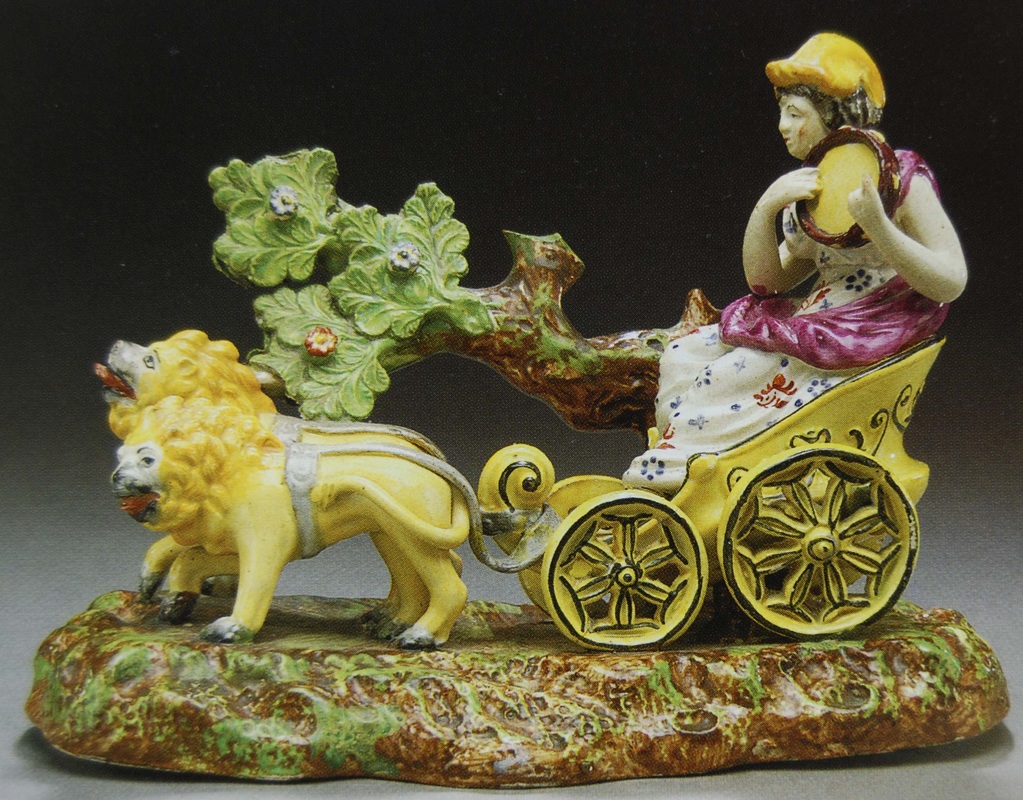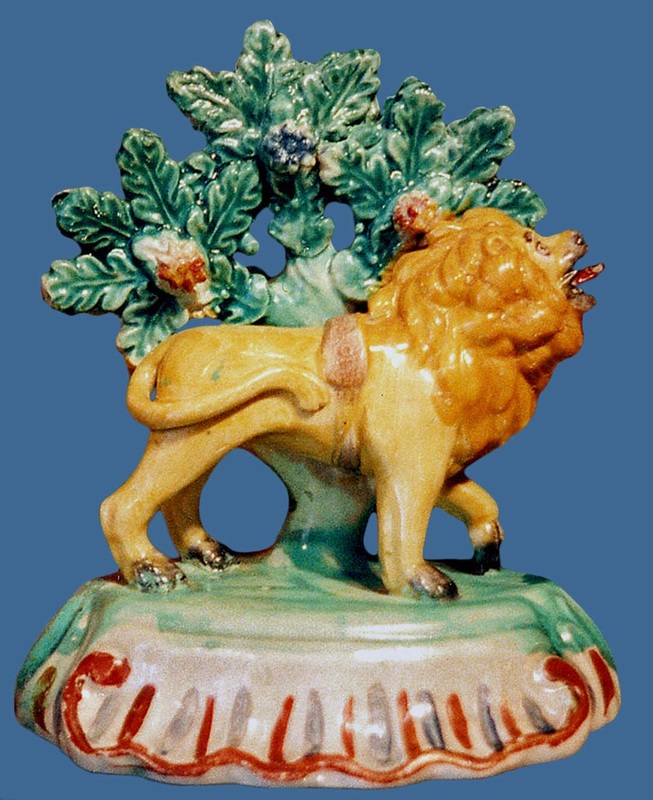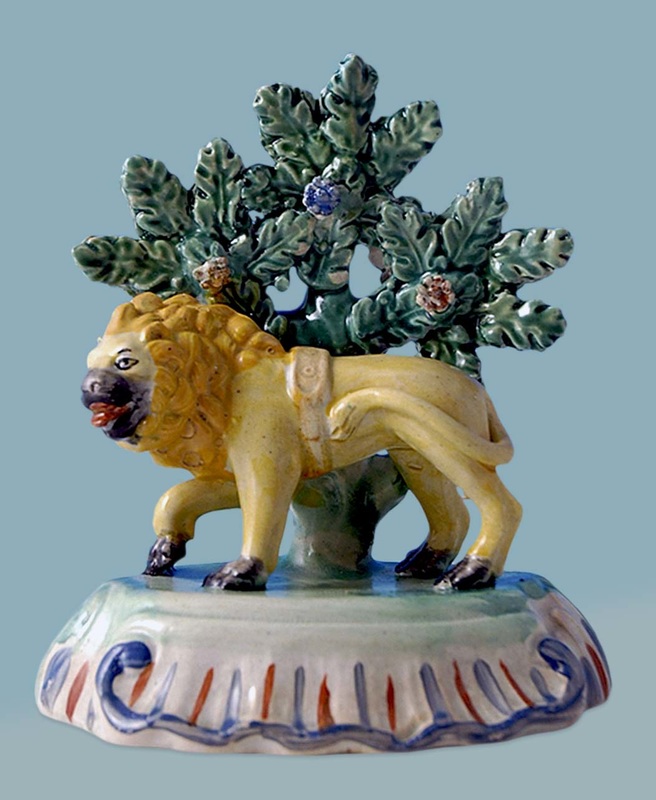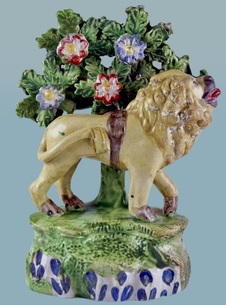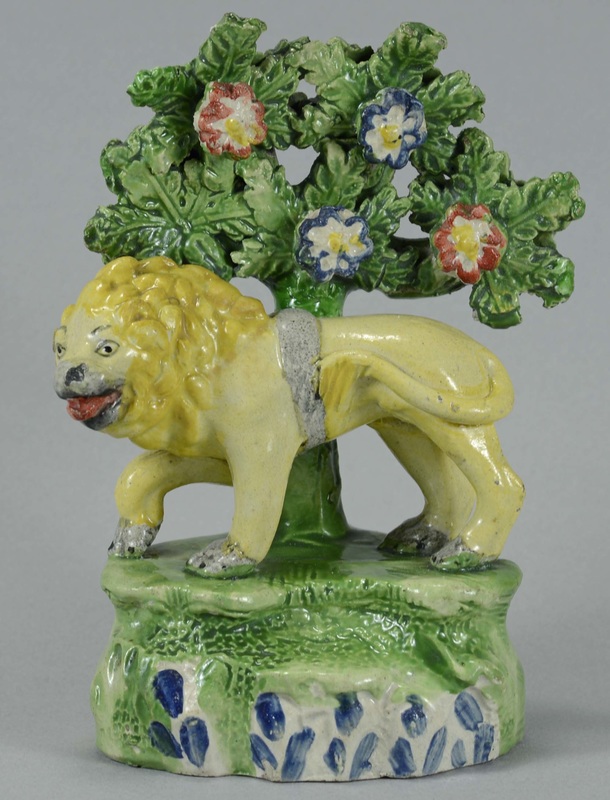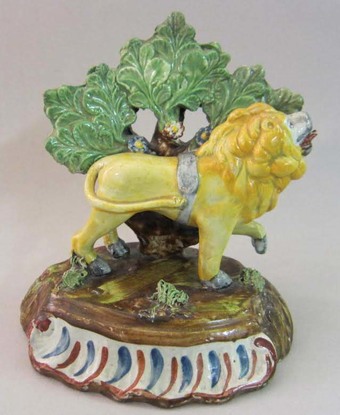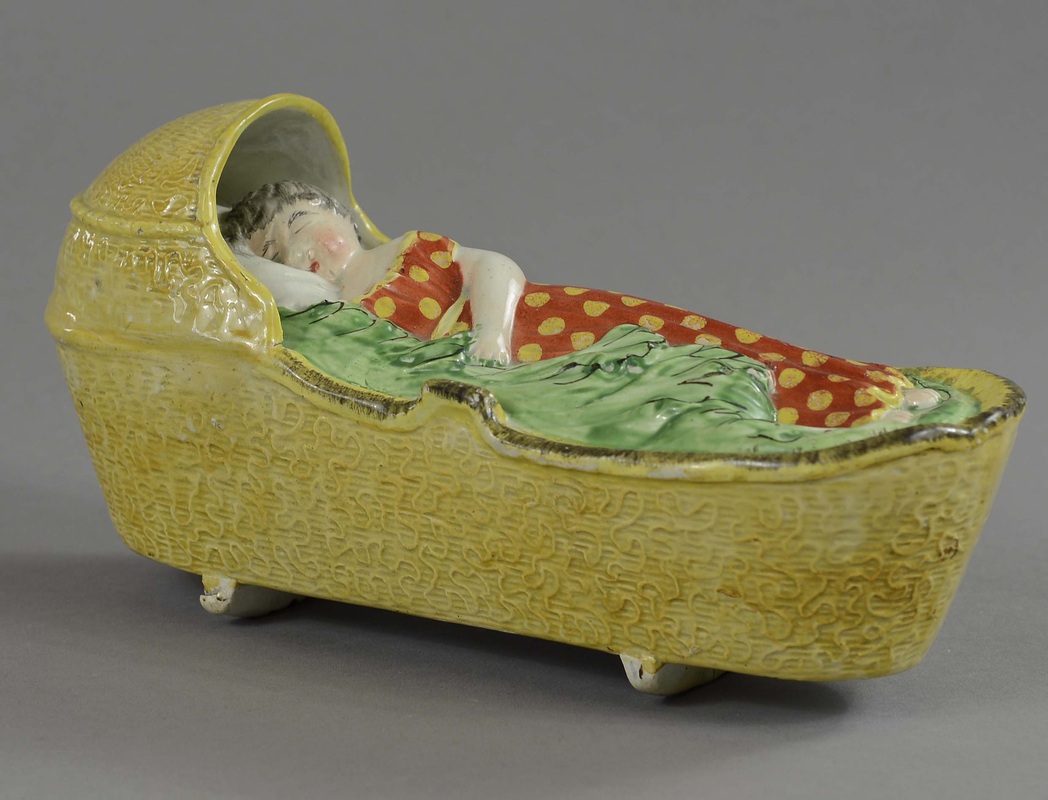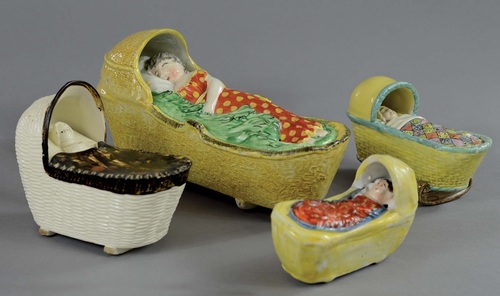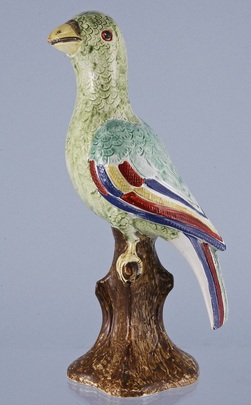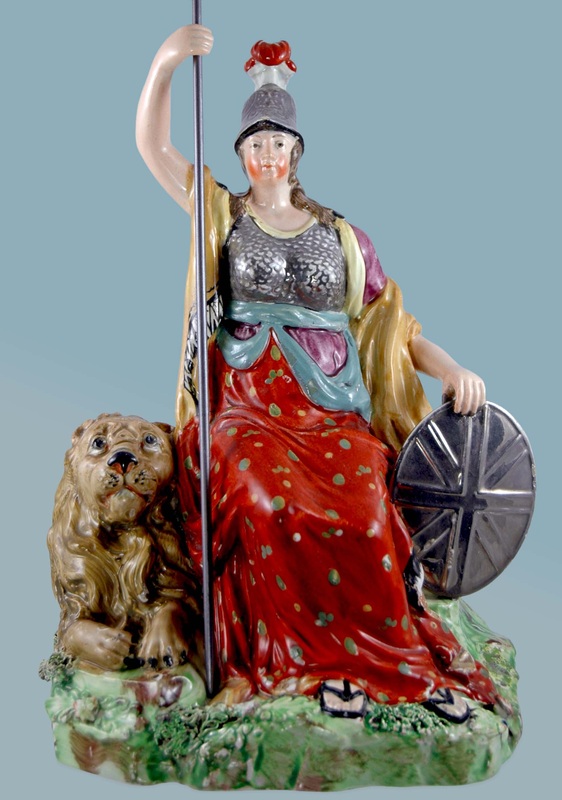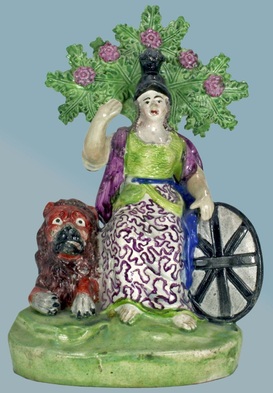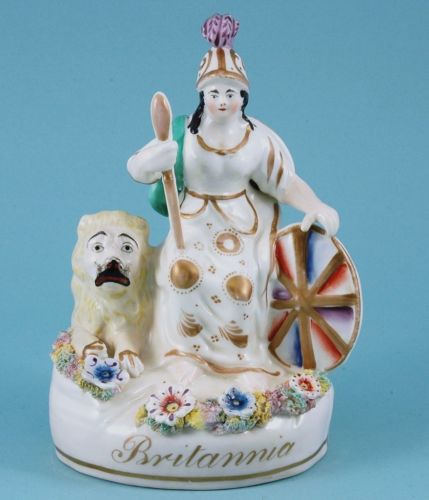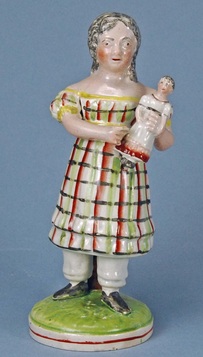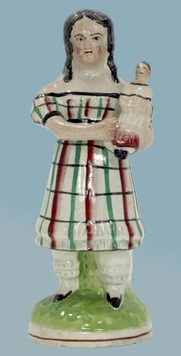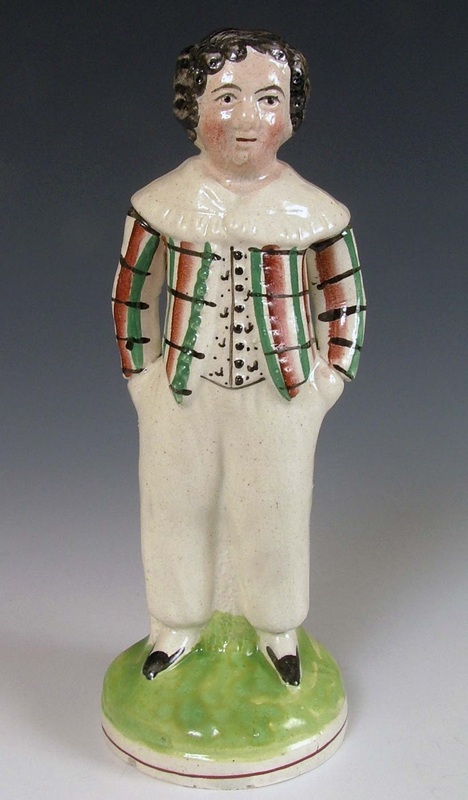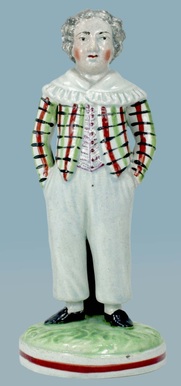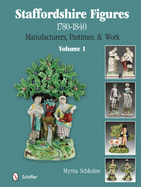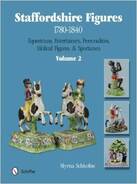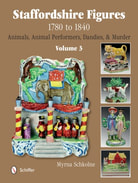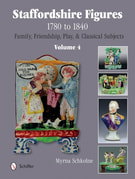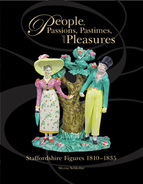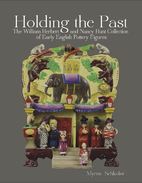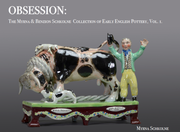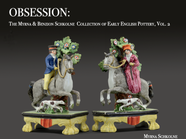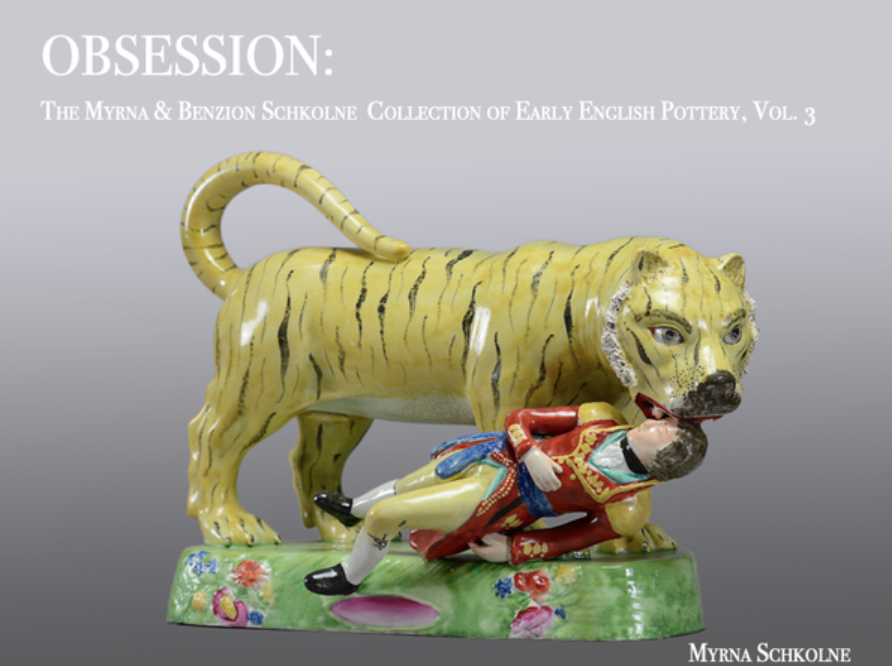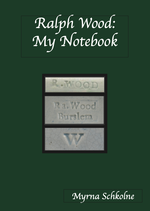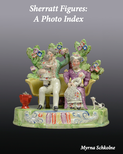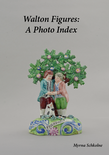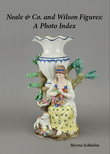|
So why does this little lion model have a strap of sorts around his belly? This question has been answered somewhere deep within my many blog postings, but here it is again: the Patriotic Group pot bank used this very lion in large chariot groups, and to pull a chariot a lion needs a harness! Of course, I was excited to see the beautiful little lion, above, that popped onto the Mears and Boyer site this week. With this combination of base and bocage, it qualifies as a new addition to my archive. But this little lion is not totally unfamiliar because, as you see below, I have recorded him facing both left and right on a differently painted base of the same form. The two examples shown here have typical Patriotic Group bocages, although they are quite different from that on the Mears and Boyer lion. To complicate matters, the Patriotic Group pot bank made this lion on other bases and with other bocages. The Patriotic Group pot bank also made other lion models on similar bases. And it made leopards. The leopards come complete with harnesses because they too pulled chariots! You can read about it in my April 2013 posting by clicking here. If you are tempted to own the Mears and Boyer lion, you will love it!
0 Comments
We live in a Golden Age for collecting early figures....all those images that are now instantly available to us. But one of the problems with pictures is that they don't convey scale. A while ago, I was at an antiques show when a collector came to see a Perswation group that a dealer had on hold for her. She knew what the group looked liked--after all, she came armed with a checkbook, ready to pay. But when the dealer took Perswation out of his cupboard and put it on the counter, the collector gasped audibly. All the pictures in the world could not convey the depth of the group, its very sizable foot print, its absolute glory. Think for a moment of all those little 3 to 4 inch cradles that you have seen, and now look at the cradle below. Your first thought might be that it is nicer than most because of the wiggle pattern on the cradle, the large child, and the pretty coloring. What the picture doesn't convey is that this is a very sizable cradle, measuring over 7 inches in length. Below you see the big cradle alongside smaller examples and you can begin to sense its size....but even this picture doesn't cannot convey the largeness of the cradle when held in your hand. Similarly, the pearlware bird above is much bigger than you might expect. After all, most bird figures are quite petite at well under 4 inches. But Big Bird measures a whopping TEN inches--that's taller than a Toby jug!--and I have never seen another like it. The best known (but far from common) figure of Britannia measures a statuesque 9 to 10 inches to the top of her plume and was made by Wood and Caldwell. But did you know there is a smaller Britannia? The less well-known figure of Britannia below is amazingly petite, measuring under 7 inches. You can see another example titled BRITANNIA in Staffordshire Figures 1780 -1840, Vol. 2 I was intrigued to see a porcelaneous example of the petite Britannia on Andrew Dando's site. It was probably made circa 1840 from the same molds used for the pearlware version above. And, as I have noted before, Wood and Caldwell's George and the Dragon also comes in two sizes.You can read about it on this site by clicking here.
I like arranging my collection just so. To my eye, there is an ideal spot for every figure, and that's where it lives....until a new addition to the collection disrupts this perfect order! But there is method in my madness: I always know where to look for a particular figure. In the past months, my eyes have routinely wandered to a shelf to enjoy one of my ceramic children, only to find no figure--and often no shelf! That's because we are in the process of relocating and my collection has been packed up for four miserable months. Last night, my eyes stupidly searched in vain for this little pearlware figure that is a firm favorite. I have dubbed this figure the "Young Collector" because she holds her doll with the care and pride of a prized possession. This is not a particularly common figure. I have seen only a handful of examples, and there are variations. The figure below is not entirely from the same molds--notice the legs are different and are joined to the base, and the head is larger. There is a companion boy model. Where as the girl figures measure around 6", the boy can approach 7 inches. In fact, there also appear to be two boy models. The figure on the right is almost 7 inches; the figure on the left is 6 inches--almost the same height as the two girls shown here. Again, notice the differences in their feet and legs. And the shorter figure stands on a narrower base. I have never seen a true pair of boy and girl--would that not be lovely? Andrew Dando tells me he recalls seeing a pair of prints, circa 1820, titled See My Baby and Just Breeched that were the design sources for these figures. The title Just Breeched refers to the fact that the boy is wearing his very first breeches, having just aged out of the gown that young boys wore in prior centuries
|
Archives
February 2024
All material on this website is protected by copyright law. You may link to this site from your site, but please contact Myrna if you wish to reproduce any of this material elsewhere. |
